Features of inner hinges
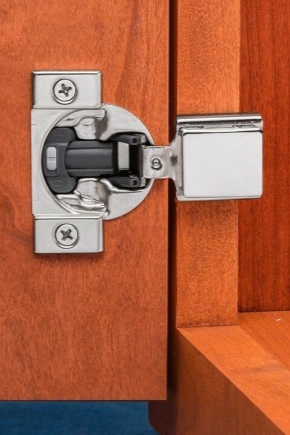
When assembling furniture, quality fittings provide at least half the success. That is why, when buying internal hinges, it is necessary to approach the choice as carefully as possible - by choosing the right fastening element, you will ensure correct and unhindered opening, while the door will open smoothly and accurately. Such hinges are also called inset hinges, they are used for cabinet doors of thick facades and glass. In this article, we will consider the features of internal loops.
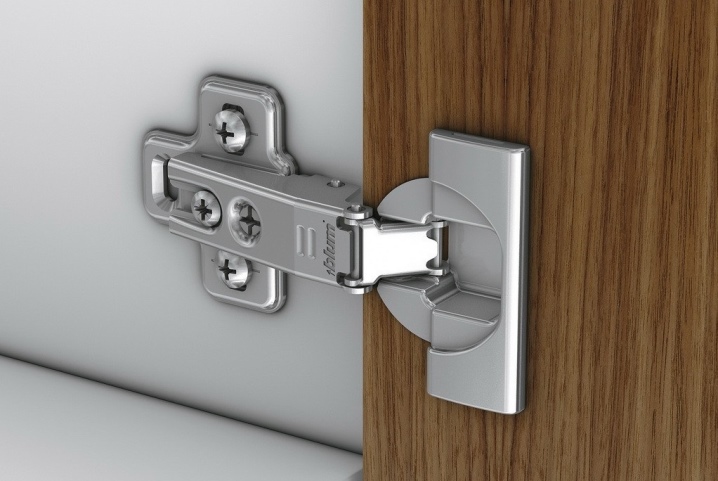
Views
If we consider the functional purpose of overhead loops, then there are several varieties.
- Furniture. They are used in the manufacture and assembly of furniture structures. They allow you to ensure the opening of facades at 45, 90 or 110 degrees. The element is mounted on cabinets in which the doors are placed inside the furniture case.
- Door. They are used when installing interior or entrance doors. Such fittings provide maximum protection against unwanted penetration into a closed room from the outside.
- Gate. These internal hinges are attached to garage doors, wickets, and other structures for a similar purpose.

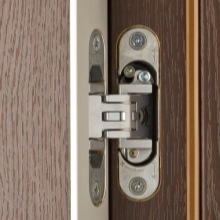
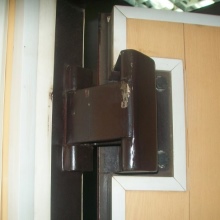
In addition to their purpose, internal hinges can differ for a number of reasons.
- Closer. Outdated, as well as modern cheap models, as a rule, do not provide for a closer in a set, which significantly reduces their technical and operational parameters. Closer solutions significantly reduce noise during use, ensure smooth closure and generally increase the usability of the fixture.
- Manufacturer. Even if initially you are going to purchase budget furniture, then you should not install accessories from a cheap segment on it - such products will not last long. Blum, Hettich and Boyard are among the main leaders in the production of inset hinges.
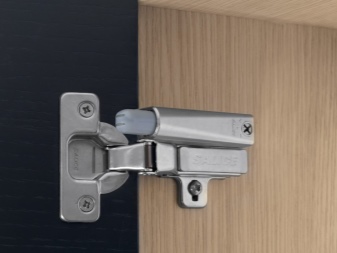
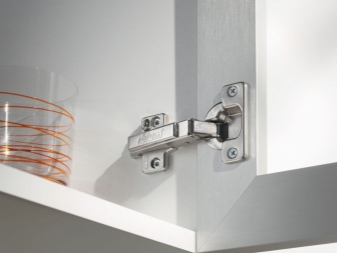
Regardless of the variety, any of these products have their own advantages and disadvantages. The positive qualities include the following:
- when the door is closed, such hinges are invisible;
- there is no access to the hinges from the outside of the doors;
- the hardware reliably protects against the effects of atmospheric precipitation, with the exception of hinges mounted on gates and wickets.
Among the disadvantages are the following:
- limited opening angle;
- complexity of installation;
- high price.
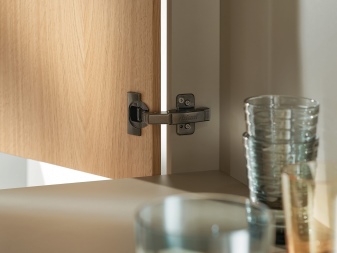
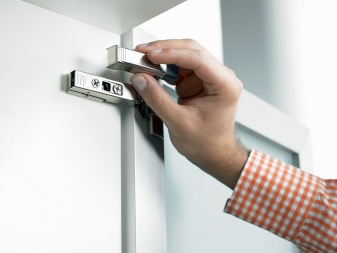
Dimensions (edit)
Most of the insert hinges have identical dimensions of the landing bowl - it corresponds to 35 mm. A special drill is used for them. However, the dimensions of the structure can vary - hinges of 16 mm, 14 mm, 12 mm and 10 mm are also common. Small inset hinges are mainly used for the production of furniture fronts, wardrobes and kitchen sets. More massive fasteners are installed in the entrance and interior doors. And also in some designs, hinges with a non-standard design and some original design are used, as a rule, such options are much more expensive than standard ones.
Internal hinges in all sizes are made from a durable alloy. It was named TsAM (after the first letters of the metals that make up it). Accordingly, it is an alloy of zinc, copper, as well as aluminum and magnesium. This mixture is characterized by increased strength, smooth surface, high wear resistance and absolute safety for people.By the way, the same alloy is often used for the production of the rest of furniture fittings, mechanisms and fasteners. From above, they are covered with nickel-plated or brass connections, it is allowed to release internal hinges of any size from metal with plastic parts.

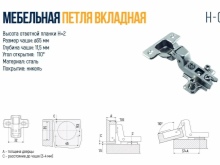
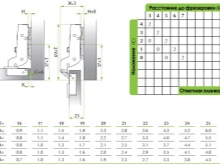
Areas of use
Inset hinges have a fairly wide scope of use. They are mounted on doors of various types, as well as on furniture fronts. The reason for their demand is based on the fact that they do not spoil the decorative appeal of the piece of furniture or the aesthetic appearance of the door. Such structures can withstand the same high loads as overhead, but at the same time they open freely, simply close and, if necessary, are fixed in the desired position. The fasteners are highly accurate, which prevents the door from spontaneously disconnecting from the body.
Since this structure is located in the doorway, accordingly, it is much more difficult to get to it - which means it is difficult to break it.
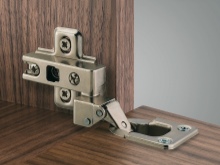
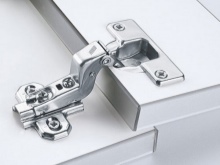
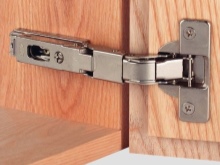
Selection Tips
The choice of suitable hinge options should be carried out taking into account the design features of the product. It is necessary to take into account the functional purpose of interior items, as well as the following factors:
- the material from which the furniture is made;
- intensity of use.
When choosing hidden accessories for a furniture set, you need to focus on its dimensions and be sure to clarify what weight load the elements can withstand. So, in kitchen cabinets and bedside tables, lightweight doors are most often installed, therefore, the fittings in them are often small.
To fix the wardrobe sash or false panel, you will need more bulky and heavy copies.

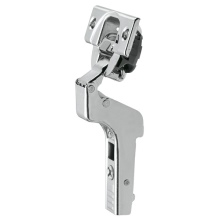

Installation
The mounting methods for different types of hinges may differ from each other. Let's dwell on the rules for installing furniture and door mechanisms.
During the installation of the furniture hinge, the following steps should be taken:
- first, markings are applied to the attachment point; since the fixation is performed on the cup and the striker, which are attached, respectively, to the facade and the box, then both surfaces will have to be marked;
- the second stage includes drilling holes for the hinge cup, as well as fasteners; for this work you will need a drill with several nozzles, as well as drills of a suitable size;
- then you need to install that part of the loop, which is equipped with a cup, and then fix the counter bar;
- at the final stage, the loop is adjusted, it must be performed in three directions.
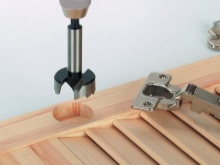
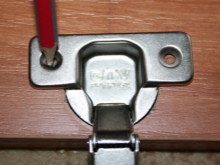
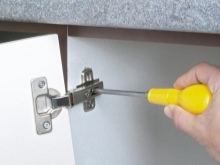
Installation of door hardware includes the following stages of work:
- in order to fix the inset door hinges, you need to mark the hinge mounting area on the side of the door leaf, as well as at the corresponding height of the door frame; for maximum speed and ease of applying such markup, it is better to use specialized templates;
- using a milling tool (in case of its absence - with a chisel and an ordinary hammer), a fragment of wood is carefully removed in the canvas and a depression is formed; if installation is carried out on a metal door, this loop must be placed between the casing and the canvas itself;
- then drill holes for fasteners with a drill;
- this is almost the end of the work, it remains only to fasten the loop and adjust it.
Important! If you are not confident in your own abilities, then you can use the services of professionals - the master will be able to quickly and inexpensively fix the fittings on doors, gates and furniture facades.
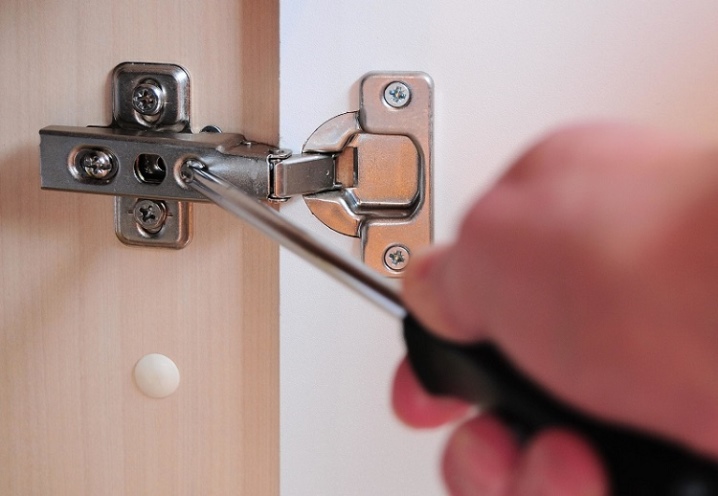
You can find out how to install an internal furniture hinge in the video below.













The comment was sent successfully.